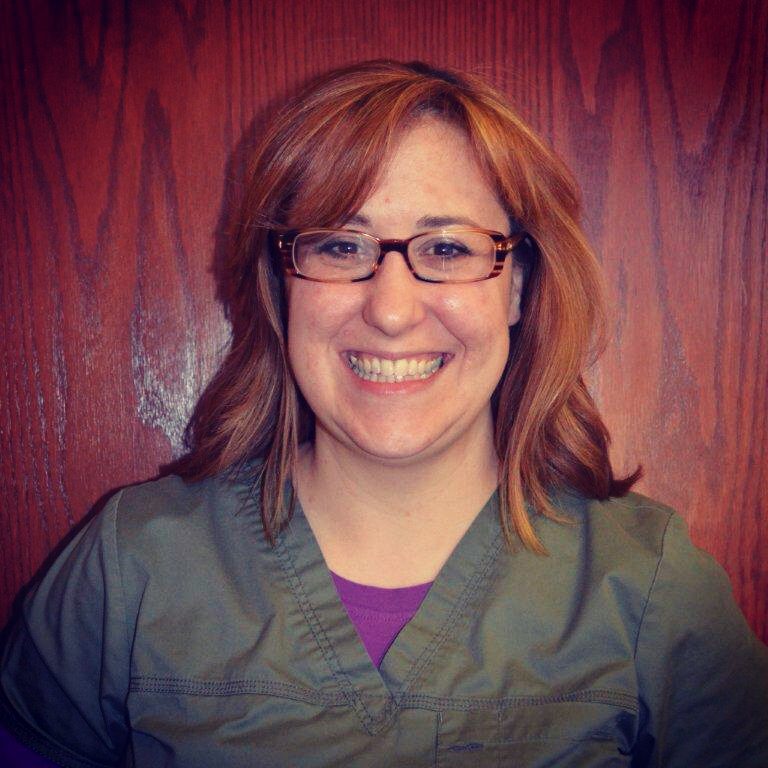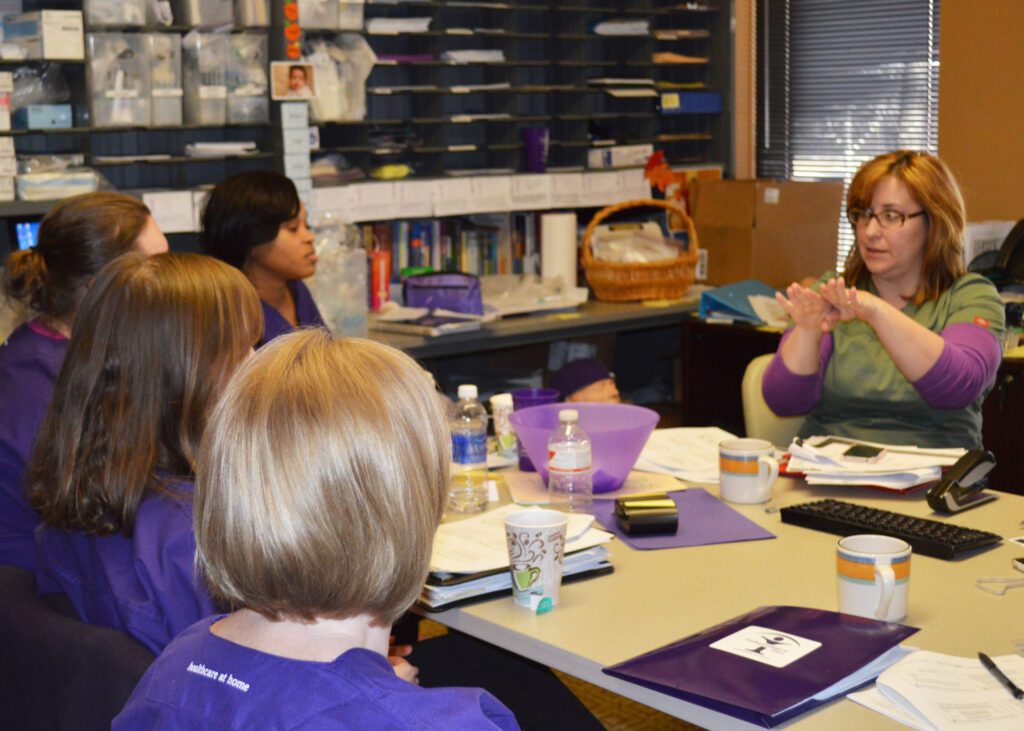
“For me, the mouth is everything. It’s where the human soul sits,” says Christine Baker, MS, CCC-SLP.
“This is my passion,” Christine Baker, MS, CCC-SLP, begins, referring to Independence Plus’ medically fragile, technology-dependent patients.
Christine is a Speech Language Pathologist, and self-described “Type A” personality who loves to talk—very fitting given her profession.
Christine spoke to our Home Nursing Residents earlier this week about oral intake for tracheostomy and ventilator-dependent patients. This patient population has a particularly high risk of dysphasia (also known as disordered swallowing), which can cause choking and aspiration.
“Swallowing,” she says, “is the difference between life and death.”
The Impact of Tube Feeding
Christine discussed the anatomy and physiology of the airway, aspiration precautions (see below), and possible consequences, including compromised respiration/oxygenation, aspiration pneumonia, compromised care across diagnoses, and oral aversions. She also spoke about the mental and emotional impacts of eating.
Take away the ability to eat, and most people have a very difficult time. Food is cultural, social, pleasurable, and one of the many ways people give and receive love.
“I’m Italian, so I love to feed people,” Christine says with a smile.
Christine’s work hit very close to home when her three-year old daughter was diagnosed with Sandifer’s Syndrome—and Christine learned her youngest needed a feeding tube.
“I cried non-stop for the first 48 hours,” she remembers. “I love feeding my kids—it’s a connection.”
The feeding tube saved her daughter’s life, and today, Christine uses this experience to empathize with her patients and their families and teach them how to overcome the stigma that can come with feeding tubes.
“You should never underestimate the emotional impact,” Christine explains.
Aspiration Precautions
Basic aspiration precautions are important to remember when caring for our medically complex, technology-dependent patient population.
This is Christine’s list of aspiration precautions for oral and enteral feeding:
Oral Feeding:
- Avoid eating or drinking when alone
- Minimize distractions (eat in a quiet environment, no television)
- Observe consistency, amount, and frequency restrictions
- Observe optimally safe upper body position, as recommended (90-degree angle)
- Ensure that all caregivers are familiar with Heimlich maneuvers, CPR and signs of aspiration (cough, throat clear, “wet” voice, struggle associated with eating or drinking, color change, and/or desaturation)
- Frequently assess for changes in pulmonary status reflective of aspiration (fevers, rhonchi, rales, color change, and/or desaturation)
Enteral Feeding
- Monitor tube position for evidence that it has changed
- Observe reflux positions
- Check residuals before feeding
Do you have a question for Christine? Tell us here!

